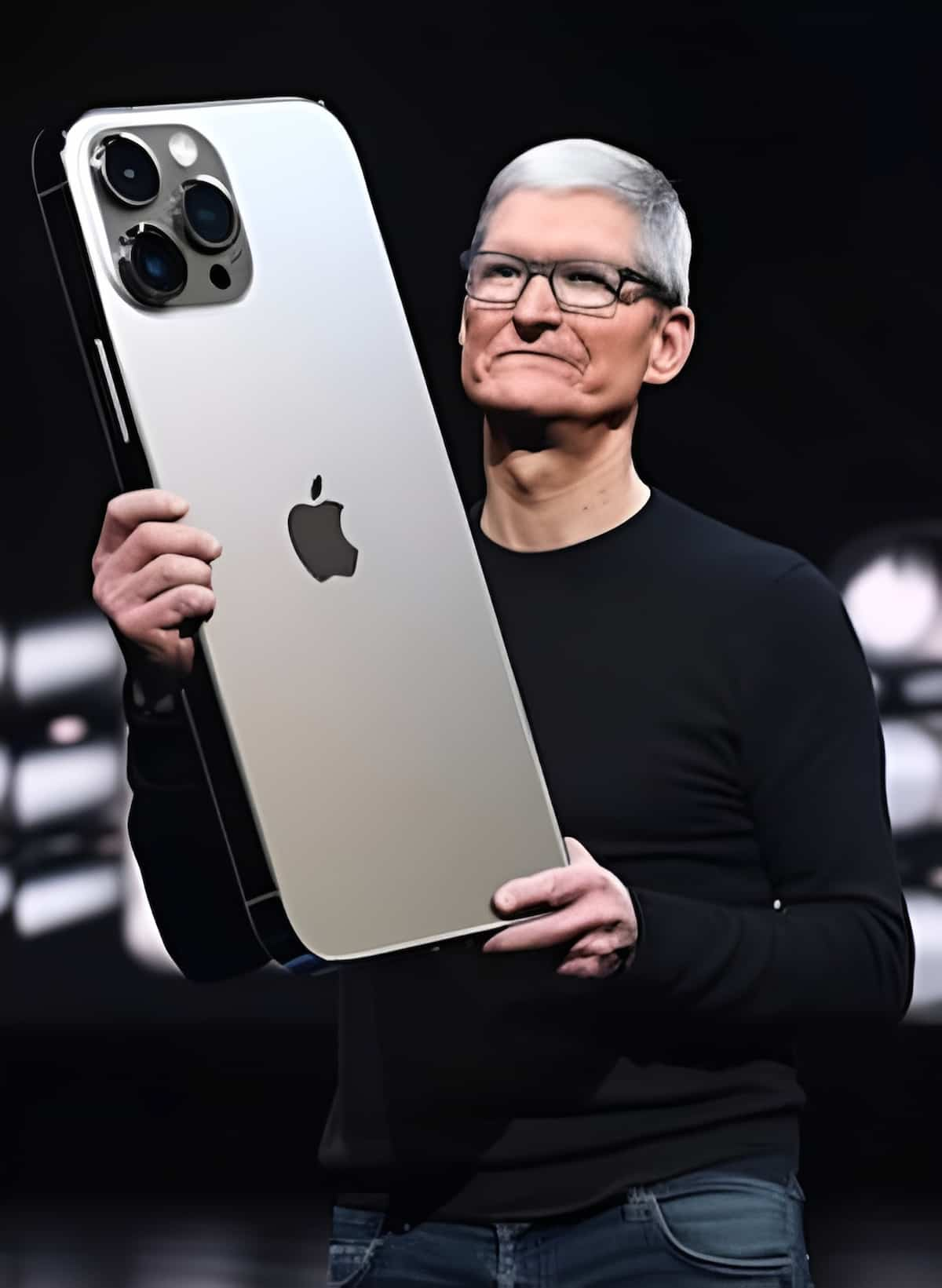When you think about tech rivalries, names like iPhone vs. Galaxy, AirPods vs. Galaxy Buds, or Mac vs. Windows might come to mind. But there’s a more profound battleground: the Apple ecosystem vs. the Samsung ecosystem. This isn’t just about comparing gadgets; it’s about the entire experience each ecosystem offers. Here’s a closer look at how these ecosystems stack up.
Key Takeaways
- Ecosystem Integration: Apple excels in seamless integration across devices, while Samsung offers flexibility and a broad range of compatible devices.
- File Sharing: Apple’s AirDrop is super convenient, but Samsung’s Quick Share and Nearby Share are also strong contenders.
- Productivity Tools: Apple’s Continuity Camera and Universal Control offer smooth multitasking. Samsung’s Dex is unique for desktop-like functionality.
- Device Tracking: Apple’s Find My is robust due to its large user base. Samsung’s SmartThings integrates well with a variety of devices.
- Voice Assistants: Samsung allows Google Assistant, which might be preferable for some users.
- Payment Options: Both ecosystems offer mobile payment solutions, with Samsung’s MST technology being a unique feature.
Ecosystem Integration: The Big Picture
In the tech world, it’s not just about individual devices. The real game-changer is how these devices work together. Apple’s ecosystem is known for its seamless integration. If you have an iPhone, MacBook, and Apple Watch, you’ll find that they communicate effortlessly. For instance, you can start a task on your iPhone and continue it on your Mac without missing a beat.
Samsung, on the other hand, offers a wider variety of devices. This flexibility can be beneficial if you’re looking for specific features or budget-friendly options. Samsung devices are compatible with many other brands, providing a broader range of choices compared to Apple’s more closed system.
File Sharing: Quick and Easy Transfers
When it comes to sharing files between devices, Apple’s AirDrop is hard to beat. It’s quick, easy, and works flawlessly within the Apple ecosystem. You can share photos, videos, and documents with just a few taps.
Samsung offers several options for file sharing. Quick Share is excellent for Samsung-to-Samsung transfers, and Nearby Share extends this capability to other Android devices. Link Sharing is another handy feature that allows you to share files through a temporary link, even with iPhone users.
Productivity Tools: Enhancing Your Workflow
Apple’s Continuity Camera allows you to use your iPhone as a webcam for your Mac, delivering impressive video quality. Universal Control is another standout feature, letting you control your iPad and Mac with a single mouse and keyboard.
Samsung’s Dex is noteworthy for transforming your phone into a desktop-like experience when connected to a monitor. This feature can be a game-changer for productivity, allowing you to use your phone as a computer.
Device Tracking and Management: Keeping Tabs on Your Gear
Apple’s Find My app is robust due to the extensive network of Apple devices. If you lose an item with an AirTag, other iPhones in the area can help locate it, even if your own device isn’t nearby.
Samsung’s SmartThings Find offers similar functionality but also integrates with a wide range of Samsung’s smart devices. From security cameras to smart locks, it keeps everything under one roof, making it convenient for managing a smart home setup.
Voice Assistants: Who’s the Smartest?
Apple’s voice assistant is known for its deep integration with iOS devices. However, Samsung allows you to use Google Assistant, which some users might find more capable and flexible.
Payment Solutions: Paying Made Easy
Both ecosystems offer mobile payment solutions. Apple Pay supports adding various payment methods, tickets, and even some IDs. Samsung’s MST technology was a standout feature, allowing payments with older magnetic stripe readers, though it’s no longer available on newer models.
Smart Home Control: Managing Your Devices
Samsung’s extensive range of smart home products gives it a clear edge in this area. You can control everything from your Samsung fridge to your microwave through your phone. Apple’s HomeKit is effective but doesn’t cover as wide a range of devices.
Messaging: The Communication Divide
Messaging remains a significant area of difference. iMessage and FaceTime are deeply integrated into the Apple ecosystem, making communication seamless within the Apple user base. On the other hand, Samsung Messages and Google Duo offer robust alternatives, though convincing friends to switch platforms can be challenging.
Conclusion: Ecosystem vs. Ecosystem
Choosing between Apple and Samsung ecosystems boils down to your priorities. If you value seamless integration and a polished user experience, Apple’s ecosystem might be your best bet. However, if you prefer flexibility, a wide range of compatible devices, and customization options, Samsung’s ecosystem could be more appealing.
Each ecosystem has its strengths and unique features, so consider what matters most to you. Whether it’s productivity tools, file sharing, or smart home control, understanding these differences will help you make an informed decision.
Apple Ecosystem vs Samsung Ecosystem: A Detailed Comparison
When choosing between Apple and Samsung, you’re not just picking a phone or a laptop. You’re deciding on an entire ecosystem that affects how all your devices work together. Let’s dive into a detailed comparison of these tech giants to help you understand which ecosystem might be right for you.
Ecosystem Features Comparison
Both Apple and Samsung offer comprehensive ecosystems designed to make your life easier, but they do it in different ways. Here’s a breakdown of what each ecosystem offers and how they compare.
Apple Ecosystem
Apple’s ecosystem is often praised for its seamless integration. Here’s what makes it stand out:
- Continuity Camera: This feature lets you use your iPhone as a high-quality webcam for your Mac. It’s incredibly convenient for video calls and meetings.
- Universal Control: With Universal Control, you can move your cursor between your Mac, iPad, and other Apple devices. It allows you to drag and drop files across devices seamlessly.
- AirDrop: Share files, photos, and videos instantly between Apple devices without needing an internet connection. It’s fast and easy, especially with other Apple users.
Samsung Ecosystem
Samsung’s ecosystem is equally impressive but takes a different approach:
- Samsung Dex: This feature transforms your Galaxy phone into a desktop experience when connected to a monitor or TV. It’s like having a full desktop computer in your pocket.
- Quick Share: Share files between Samsung devices quickly. It’s similar to AirDrop but tailored for Samsung products.
- Link Sharing: Send files to other devices, including iOS devices, via a temporary link.
Devices and Hardware
Let’s compare some key devices from each ecosystem to see how they stack up.
Galaxy S23 Ultra vs iPhone 14 Pro
- Galaxy S23 Ultra: Known for its high-resolution camera and powerful performance, this phone excels in photo and video quality.
- iPhone 14 Pro: Offers a smooth, high-performance experience with impressive camera capabilities and integration with other Apple devices.
Galaxy Watch vs Apple Watch
- Galaxy Watch: Integrates well with Samsung devices and offers features like Samsung Pay and advanced health tracking.
- Apple Watch: Works best with iPhones, offering features like fitness tracking, notifications, and seamless integration with other Apple products.
Galaxy Buds vs AirPods
- Galaxy Buds: Good for Samsung users, providing excellent sound quality and integration with Samsung devices.
- AirPods: They work with any Apple device and offer features like spatial audio and seamless connectivity.
Samsung Tablets vs iPad
- Samsung Tablets: Offer flexibility with Android apps and integration with Samsung services.
- iPad: Known for its smooth performance and integration with Apple’s ecosystem, making it a great companion for MacBooks and iPhones.
File Sharing
Transferring files between devices is a crucial feature for many users. Here’s how Apple and Samsung handle file sharing:
Apple’s AirDrop
AirDrop allows you to share files quickly and easily between Apple devices. It’s highly reliable and doesn’t require an internet connection.
Samsung’s Quick Share and Nearby Share
- Quick Share: Ideal for transferring files between Samsung devices. It’s fast and intuitive.
- Nearby Share: Works with a broader range of Android devices, making it versatile for file transfers.
Productivity Tools
Both ecosystems offer unique tools to boost your productivity.
Apple Continuity Camera
Continuity Camera lets you use your iPhone as a webcam for your Mac, providing high-quality video for meetings and calls.
Samsung Dex
Dex allows you to use your Galaxy phone as a desktop computer when connected to a monitor. It’s perfect for multitasking and increasing your productivity on the go.
Universal Control
Here’s how each ecosystem handles control across devices:
Apple’s Universal Control
With Universal Control, you can use one mouse and keyboard to control multiple Apple devices. It’s perfect for moving between a Mac and an iPad seamlessly.
Samsung’s Cross-Device Control
Samsung offers a similar feature, allowing you to control your phone and tablet with a single set of peripherals. It’s useful for those who use multiple Samsung devices.
Device Tracking and Management
Keeping track of your devices is important for security and convenience.
Apple’s Find My
Find My helps you locate your Apple devices, including AirTags, even if they’re not near your own device. The large network of Apple users aids in finding lost items.
Samsung’s SmartThings Find
SmartThings Find allows you to track Samsung devices and integrates with various IoT products. It’s a robust option for managing multiple devices.
Payment and Wallet Features
Both ecosystems offer mobile payment solutions.
Apple Pay
Apple Pay allows you to pay using your iPhone or Apple Watch. It also supports storing digital IDs and tickets, making it a convenient option for managing payments.
Samsung Pay
Samsung Pay includes MST technology, which lets you pay with older card readers. This feature is unique and very useful in areas where newer card readers aren’t available.
Smart Home Control
Controlling smart home devices is a major feature of modern ecosystems.
Apple’s HomeKit
HomeKit integrates with a range of smart home devices, allowing you to control them using your iPhone or iPad. It’s well integrated with Siri for voice control.
Samsung SmartThings
SmartThings offers extensive control over a wide range of Samsung and third-party smart home devices. It’s highly versatile and integrates well with Samsung’s other products.
Messaging
Messaging is a crucial feature for many users.
Apple iMessage
iMessage is a seamless messaging platform for Apple users, supporting features like end-to-end encryption and integration across devices.
Samsung Messages and Google Duo
Samsung Messages supports RCS and integrates well with other Samsung devices. Google Duo offers video calling across platforms, but getting your friends to use it might be challenging if they’re Apple users.
Underlying Themes
Apple’s Seamless Integration
Apple’s ecosystem is designed to work together harmoniously. Everything feels like it’s part of a single, well-oiled machine, making it easy to use and hard to leave.
Samsung’s Flexibility
Samsung boasts flexibility, allowing for a wide range of devices and configurations. This approach gives users more options but can be less cohesive than Apple’s tightly integrated system.
Conclusion
Choosing between the Apple and Samsung ecosystems ultimately depends on your priorities. If you value seamless integration and high-quality devices that work perfectly together, Apple might be the right choice. If you prefer flexibility and the ability to mix and match devices, Samsung’s ecosystem could be a better fit. Both ecosystems offer impressive features and devices, so consider what matters most to you in your tech experience.
Apple Find My vs Samsung SmartThings Find: Which Ecosystem is Better for Tracking and Managing Your Devices?
When you invest in a tech ecosystem, it’s not just about the devices themselves but also about how well you can manage and track them. Apple and Samsung offer robust solutions for tracking your gadgets and managing smart home devices. Let’s dive into a detailed comparison of Apple’s Find My and Samsung’s SmartThings Find, and explore how their features stack up.
Device Tracking and Management
Apple Find My vs Samsung SmartThings Find
Both Apple and Samsung offer powerful tools to keep track of your devices, but they do so in different ways.
- Apple Find My: This feature is a game-changer for Apple users. It helps locate Apple devices like iPhones, iPads, Macs, and even AirTags. If you misplace an item, Find My uses a combination of GPS, Bluetooth, and crowdsourced data to pinpoint its location. The vast network of Apple devices worldwide enhances the accuracy and reliability of Find My, making it highly effective.
- Samsung SmartThings Find: Samsung’s version also provides robust tracking capabilities for Samsung devices and accessories. It uses similar technologies, including Bluetooth and GPS, to track your items. The SmartThings app integrates with a variety of Samsung products, making it a central hub for device management.
AirTags vs Galaxy Tags
Both Apple and Samsung have their own tracking tags:
- Apple AirTags: These small, coin-sized devices can be attached to keys, bags, or other items you might misplace. They use ultra-wideband technology for precise location tracking and are part of the Find My network. If your AirTag is out of range of your device, other Apple users can help locate it anonymously.
- Samsung Galaxy Tags: These are Samsung’s answer to AirTags. They work similarly, helping you track and find your belongings. They integrate with the SmartThings app and use Bluetooth for proximity-based tracking.
Smart Home Device Management
Managing your smart home devices is another key aspect of ecosystem integration. Here’s how Apple and Samsung handle it:
Apple HomeKit vs Samsung SmartThings
- Apple HomeKit: HomeKit is Apple’s framework for managing smart home devices. It allows you to control compatible lights, thermostats, cameras, and more using the Home app on your iPhone or iPad. You can also use Siri for voice commands, making it easy to manage your home hands-free.
- Samsung SmartThings: SmartThings offers extensive control over a wide range of smart home devices, not just Samsung’s own products. It supports third-party devices and integrates well with other ecosystems. You can control your devices through the SmartThings app or use voice assistants like Google Assistant and Amazon Alexa.
Managing Smart Home with Samsung
Samsung’s smart home devices, including appliances, lights, and security systems, can be controlled through the SmartThings app. This integration provides a centralized platform for managing your home, whether you’re at home or away.
Voice Assistants
Voice assistants have become an integral part of modern tech ecosystems. Here’s how Apple and Samsung stack up:
Apple Voice Assistant Features
- Siri: Siri is Apple’s voice assistant, available on all Apple devices. It helps with tasks like setting reminders, sending messages, and controlling smart home devices. Siri is well-integrated into Apple’s ecosystem, making it easy to perform tasks hands-free.
Samsung Google Assistant Integration
- Google Assistant: Samsung devices offer compatibility with Google Assistant, a powerful and versatile voice assistant. It provides similar functionalities to Siri, such as managing tasks, answering questions, and controlling smart home devices. Google Assistant is praised for its broad range of skills and integrations, making it a strong competitor.
Voice Assistant Comparison
When comparing Siri and Google Assistant, it’s clear that both have their strengths. Siri is deeply integrated into Apple’s ecosystem, making it seamless for Apple users. Google Assistant, however, offers broader compatibility and more features across various platforms.
Mobile Payments
Mobile payments have revolutionized how we handle transactions. Here’s how Apple and Samsung manage payments:
Apple Pay vs Samsung Pay
- Apple Pay: This service allows you to make payments using your iPhone or Apple Watch. It’s secure, quick, and works with a wide range of retailers. You can also store digital tickets and IDs in Apple Wallet, making it a versatile payment solution.
- Samsung Pay: Samsung Pay supports payments through both NFC (Near Field Communication) and MST (Magnetic Secure Transmission). MST allows you to pay at older card readers that don’t support NFC, which is a unique advantage. Samsung Pay also offers features like storing digital tickets and loyalty cards.
Mobile Payment Technology MST
MST technology was a standout feature of Samsung Pay. It allowed users to pay using magnetic signals, making it compatible with older payment terminals. However, this technology has been phased out in favor of NFC.
Digital Wallets Comparison
Both Apple Wallet and Samsung Wallet offer extensive features for managing payments and digital IDs. Apple Wallet is known for its integration with Apple’s ecosystem, while Samsung Wallet offers flexibility with its support for MST.
Conclusion
Choosing between Apple and Samsung’s ecosystems comes down to personal preference and how you use technology. Apple’s ecosystem is known for its seamless integration and user-friendly features like Find My and HomeKit. On the other hand, Samsung offers flexibility with its SmartThings platform and compatibility with Google Assistant.
Both ecosystems provide robust solutions for tracking devices, managing smart home systems, and handling mobile payments. Consider what features are most important to you and how they fit into your daily life. Whether you choose Apple or Samsung, both ecosystems offer powerful tools to enhance your tech experience.
Apple vs Samsung Ecosystem: Messaging, Integration, and the Tech Walled Gardens
Choosing between Apple and Samsung often feels like choosing between two different worlds. Both ecosystems offer a range of devices and features, but they approach integration and user experience in unique ways. Let’s explore the key aspects of Apple and Samsung ecosystems, focusing on messaging, integration, and the broader impact of tech walled gardens.
Messaging: iMessage vs Samsung Messages
iMessage vs Samsung Messages
Messaging is a crucial part of any tech ecosystem, and both Apple and Samsung offer their own solutions:
- iMessage: Apple’s messaging service is a cornerstone of its ecosystem. With iMessage, you get seamless communication between iPhones, iPads, and Macs. Features like end-to-end encryption ensure your conversations are private. Plus, iMessage supports multimedia messages, group chats, and even stickers and effects, adding a fun element to your texts.
- Samsung Messages: Samsung’s messaging app supports RCS (Rich Communication Services), which enhances SMS with features like read receipts, typing indicators, and better multimedia support. However, Samsung Messages isn’t as integrated into the ecosystem as iMessage is with Apple devices.
RCS Messaging Features
RCS is a protocol that aims to upgrade SMS messaging. It brings features like:
- Read receipts
- Typing indicators
- Rich media sharing
While RCS is a step forward for Android, it’s not as widespread or uniformly supported as iMessage, which can lead to inconsistencies in messaging experiences.
Google Duo vs FaceTime
When it comes to video calling, both ecosystems offer strong options:
- FaceTime: Apple’s video calling app is integrated into its devices, making it easy to start a call from an iPhone, iPad, or Mac. It supports high-quality video and audio and is available on iOS and macOS devices.
- Google Duo: This app works across platforms, including iOS and Android, making it versatile. Google Duo offers high-quality video calls and features like “Knock Knock,” which shows a live preview of the caller before you answer.
Ecosystem Integration and Flexibility
Apple Ecosystem Continuity
Apple’s ecosystem is known for its continuity features:
- Handoff: Move seamlessly between your Apple devices. Start an email on your iPhone and finish it on your Mac.
- Universal Clipboard: Copy text, images, or videos on one Apple device and paste them on another.
- Continuity Camera: Use your iPhone as a camera for your Mac, capturing high-quality photos and scans.
Samsung Ecosystem Flexibility
Samsung’s ecosystem excels in flexibility and cross-device compatibility:
- Samsung Dex: Allows you to use your Samsung phone as a desktop computer by connecting it to a monitor, keyboard, and mouse.
- Cross-Platform Support: Samsung devices integrate well with Google’s services and offer compatibility with a broad range of third-party apps and services.
The Walled Garden Effect
Tech Walled Gardens Explained
The term “walled garden” describes a closed ecosystem where users are encouraged to stay within the same brand’s products and services. Both Apple and Samsung create these walled gardens in different ways:
- Apple’s Approach: Apple creates a seamless experience across its devices, making it tempting to stay within the ecosystem. Features like iMessage, FaceTime, and AirDrop work best within Apple’s ecosystem, creating a strong incentive to stick with Apple products.
- Samsung’s Approach: Samsung offers a more flexible ecosystem, allowing integration with a wide range of third-party devices and services. This flexibility makes it easier to switch between ecosystems but can result in less seamless integration compared to Apple.
Comparing Ecosystem Features
Seamless Device Integration
Apple’s ecosystem is renowned for its smooth integration:
- Cross-Device Functionality: Features like Handoff and Continuity ensure a fluid experience across Apple devices.
- Consistent Updates: Apple controls the entire software environment, providing consistent updates and compatibility.
Samsung offers flexibility but with some trade-offs:
- Broad Compatibility: Samsung devices work well with various third-party products and services.
- Integration Variability: Integration quality can vary depending on the device and service used.
Productivity with Tech Ecosystems
Both Apple and Samsung offer features to enhance productivity:
- Apple: With tools like Universal Control and Sidecar, you can use your iPad as a second screen for your Mac, and move your cursor between devices seamlessly.
- Samsung: Samsung’s Dex provides a desktop-like experience using your phone, and its multi-window support allows you to multitask effectively.
Challenges of Ecosystem Switching
Switching from one tech ecosystem to another can be challenging:
- Apple to Samsung: Transitioning from Apple to Samsung might mean losing some continuity features and needing to adapt to different apps and services.
- Samsung to Apple: Moving to Apple could require re-purchasing apps or services and adapting to Apple’s walled garden features.
Conclusion
In the debate between Apple and Samsung ecosystems, both have their strengths and trade-offs. Apple excels in seamless integration and continuity, making it a great choice for users invested in the Apple ecosystem. Samsung offers flexibility and broad compatibility, allowing for easier integration with various third-party products and services.
Ultimately, the choice between Apple and Samsung comes down to personal preference and how you use technology. Whether you value seamless integration or flexibility, understanding the nuances of each ecosystem can help you make an informed decision.














